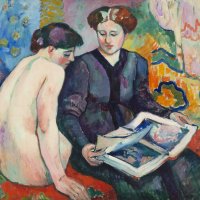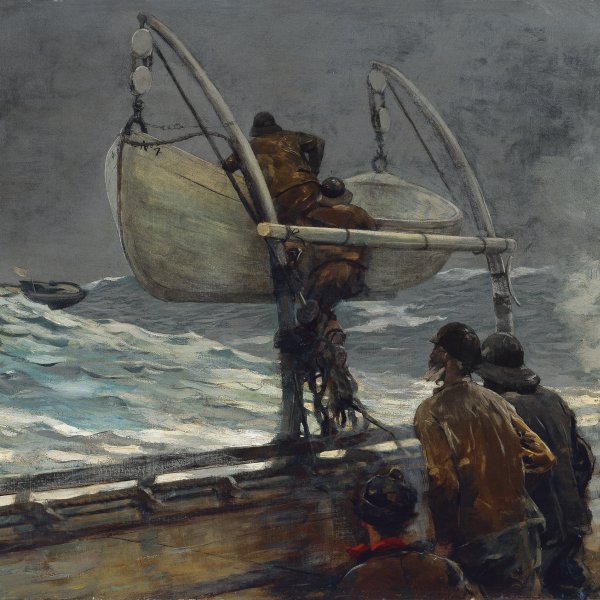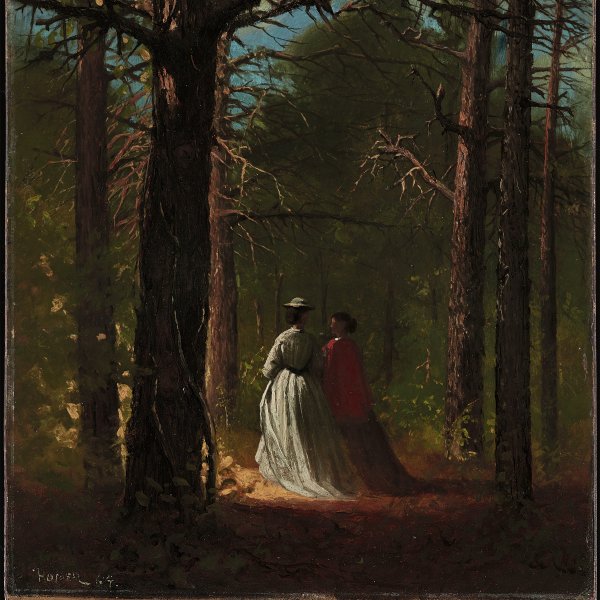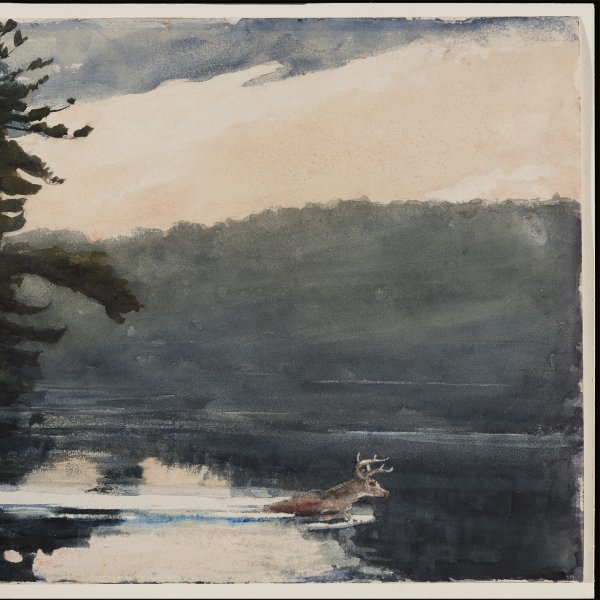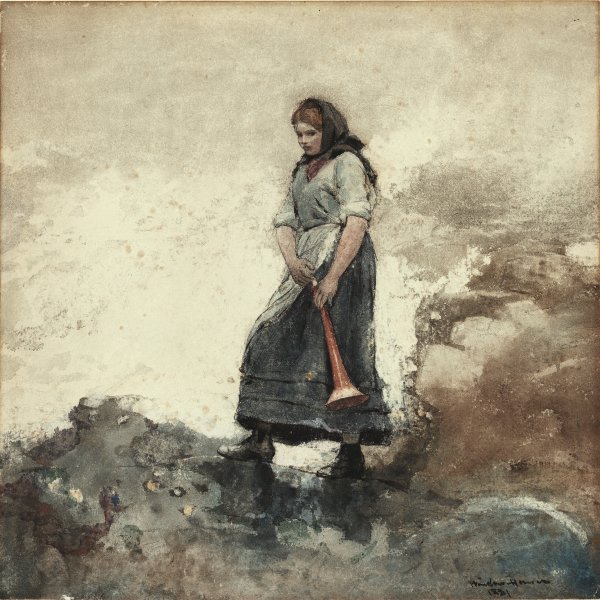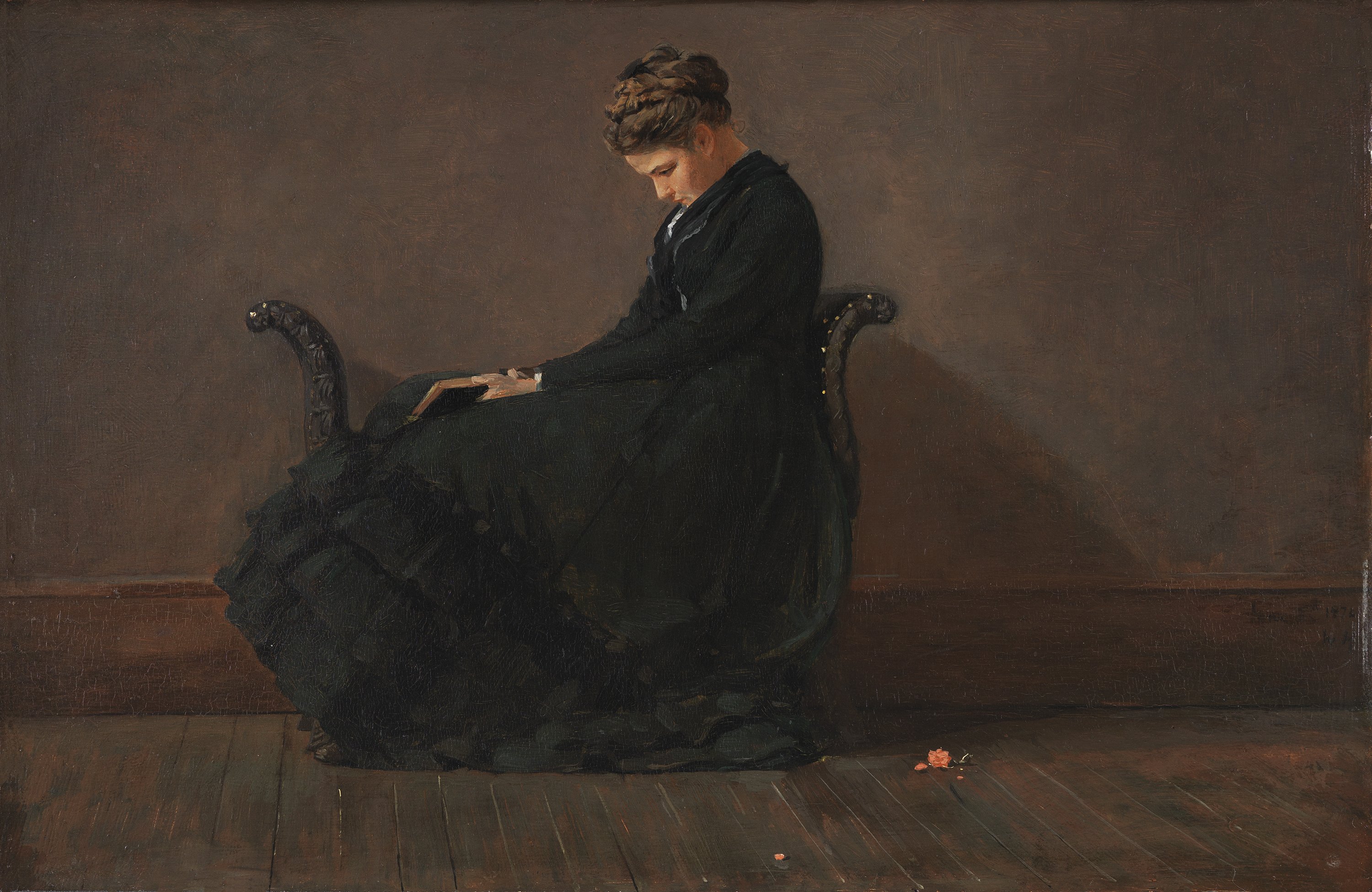Portrait of Helena de Kay
This small portrait set in an interior is one of only a few by Winslow Homer, whose landscapes and scenes of leisure generally depict anonymous figures. Helena de Kay belonged to the circle of artists and intellectuals that occupied the Tenth Street studios in New York and with whom Homer was associated at the outset of his career. His close friendship with De Kay is expressed in this dark toned composition in which the seated model is shown in profile with her head lowered and holding a book. The composition is similar to Whistler’s Composition in Black and Grey No. 1: Portrait of the Artist’s Mother of 1871. Behind the sitter a rose has fallen on the ground with two of its petals scattered, contributing to the melancholy mood of the painting.
Homer later gave the painting to De Kay on the occasion of her wedding to the publisher Richard Watson Gilder. The inscription at the lower right corner, “June 3rd 1874”, records the date of the marriage. Several writers have stated that the sitter was the great love of Homer’s life.
CM
Executed during a period of major artistic changes in which, according to Barbara Novak, Homer was shifting “toward a more deliberate, even calculated interest in the classic organization of the picture, ” the Portrait of Helena de Kay may be linked both to Jacques-Louis David’s portrait of Madame Récamier which Homer may have seen in the Louvre in 1866, and to Whistler’s portraits, especially that of his mother.
Although Homer generally portrayed women in outdoor settings, he painted a series of indoor works exploring their more dreamy and introspective side. Helena de Kay, the pensive sitter dressed severely in black, is shown in profile seated in an armchair with a curved Empire-style back in a very stark interior that is sketchily defined by the horizontal line of the skirting board and the vanishing lines of the wooden floor. The bare wall and the foreground space, vacant except for the rose that has fallen onto the floor, emphasise the solitude and melancholy of the figure and concentrate the viewer’s gaze on the young woman’s bowed head and her hands clasping the closed book on her lap.
Paloma Alarcó

